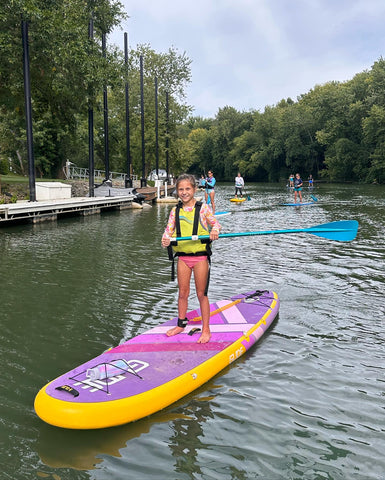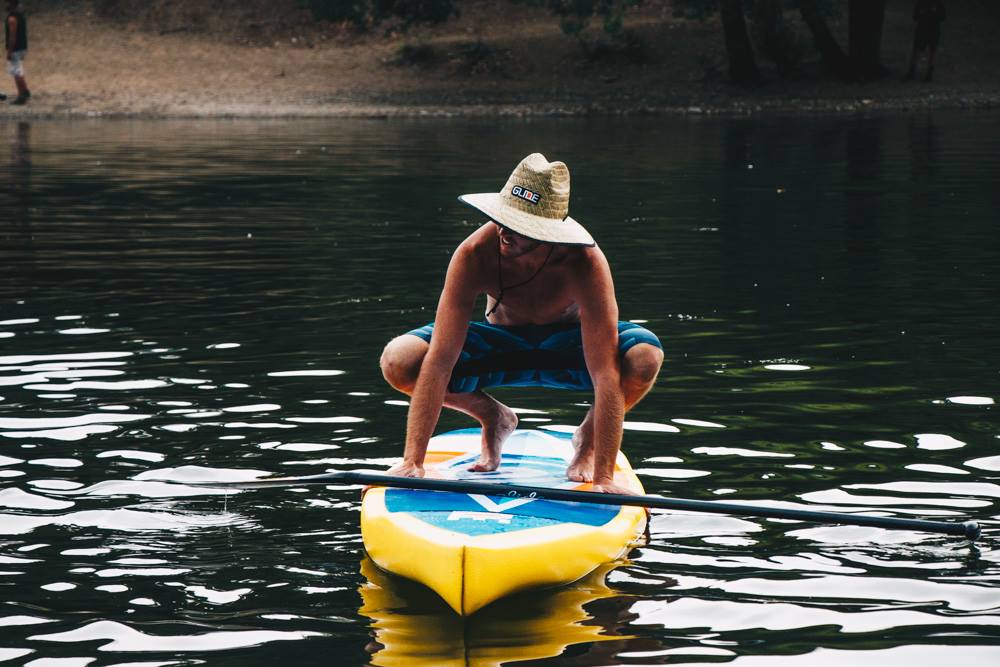
Beginner’s Guide to Stand-Up Paddleboarding (SUP)
New to paddleboarding? This beginner’s guide covers everything you need to know — from gear and balance tips to paddle techniques and safety essentials. Learn how to get started with confidence.
What Is Stand-Up Paddleboarding?
At its core, SUP involves standing on a large, stable board and using a paddle to glide across the water. Unlike surfing, which relies on waves, paddleboarding can be done in calm lakes, slow rivers, or the ocean — making it incredibly versatile and accessible.
There are different types of SUP (touring, yoga, racing, fishing), but the basic skills and equipment remain largely the same.

Essential Gear for Beginners
Getting started doesn’t require a ton of gear, but choosing the right equipment can make a huge difference in your experience.
✔ Paddleboard
Beginners should start with a wide, stable board. Inflatable boards like the ones from Glide are great for new paddlers because they’re:
-
Durable and forgiving
-
Easy to transport and store
-
Comfortable underfoot
Look for boards around 10’6” to 11’6” long and at least 32” wide. A board with higher volume will provide more stability.
✔ Paddle
Choose an adjustable paddle so you can tailor the height to your body and the conditions. A properly sized paddle makes paddling more efficient and less tiring.
✔ Leash
Always wear a leash — it keeps you connected to your board if you fall off. Especially important in moving water or windy conditions.
✔ PFD (Personal Flotation Device)
Legally required in many areas. Look for a low-profile belt-style or inflatable vest that doesn’t restrict your movement.
✔ Other Helpful Gear
-
Waterproof dry bag for your phone or essentials
-
Reusable water bottle
-
Hat, sunglasses, and reef-safe sunscreen
-
Quick-dry clothing or swimsuit
-
Water shoes if launching from rocky or rough terrain
How to Stand Up on a Paddle Board (Step-by-Step)

Standing up on your board may feel intimidating at first, but with a few steps and a little patience, you’ll be upright and cruising in no time.
-
Start in Calm, Shallow Water
Begin where you can comfortably stand next to the board. Place it in the water and position yourself behind the center handle. -
Climb On in a Kneeling Position
Kneel on the center of the board with your knees shoulder-width apart. Get comfortable and find your balance. -
Paddle from Your Knees First
Take a few strokes while kneeling to get a feel for the movement and tracking. -
Stand Up Slowly
Place your hands on the board for balance and bring one foot up at a time to where your knees were. When ready, stand slowly — keeping your knees slightly bent and eyes looking ahead, not at your feet. -
Maintain a Balanced Stance
Keep your feet parallel, about shoulder-width apart, and centered on the board. Your posture should be tall but relaxed, with knees bent and core engaged.
Basic Paddle Techniques
Using the paddle correctly improves your speed, balance, and stamina. Here’s how to get started:
The Forward Stroke
-
Reach the paddle forward with the blade fully submerged.
-
Pull the paddle back alongside the board using your core (not just your arms).
-
Keep your paddle as vertical as possible.
-
Alternate sides every 3–5 strokes to stay straight.
Turning
Use a wide sweep stroke (a big arc away from the board) to turn in the opposite direction of your paddle.
Reverse Stroke
Want to slow down or back up? Plant the paddle behind you and pull it toward the nose.

Where to Go Paddleboarding as a Beginner
Location makes a big difference, especially early on. Choose spots with:
-
Calm, flat water
-
Minimal wind and boat traffic
-
Easy access for launching
-
No strong currents or waves
Great beginner SUP spots include:
-
Small lakes or reservoirs
-
Protected bays or inlets
-
Wide, slow-moving rivers
Avoid ocean surf, tidal rivers, or windy open water until you’re more confident on your board.
Safety Tips Every New Paddler Should Know
SUP is safe, but nature can be unpredictable. Stay safe with these key practices:
-
Always wear a leash and PFD
-
Check the weather and wind before heading out
-
Tell someone your plan or paddle with a buddy
-
Bring water and sun protection
-
Stay within sight of shore until you’re more advanced
-
Avoid paddling in currents or offshore winds if you’re unsure
Common Beginner Mistakes to Avoid
-
Looking down instead of ahead
-
Locking your knees (keep them soft)
-
Using only arms to paddle (engage your core and back)
-
Starting in windy or choppy conditions
-
Standing too far forward or backward on the board
What’s Next After the Basics?
Once you’re comfortable on flat water, you can explore all kinds of paddleboarding adventures:
-
Try SUP yoga for balance and mindfulness
-
Go touring on longer distances
-
Fish from your board
-
Tackle light river current or ocean paddling
As your confidence grows, your options do too.
Helpful Resources for New Paddlers
Final Thoughts

Paddleboarding is a simple, beautiful way to explore the water — and once you get the hang of it, it's hard to stop. The key is to start slow, stay safe, and give yourself time to build your balance and technique.
Whether you’re here to relax, exercise, or discover new places, SUP has something for everyone.
Related Topics
Common Stand Up Paddle Boarding Mistakes
Things To Know About Paddle Boarding in Winter
Best Places to Paddle Board in Texas

